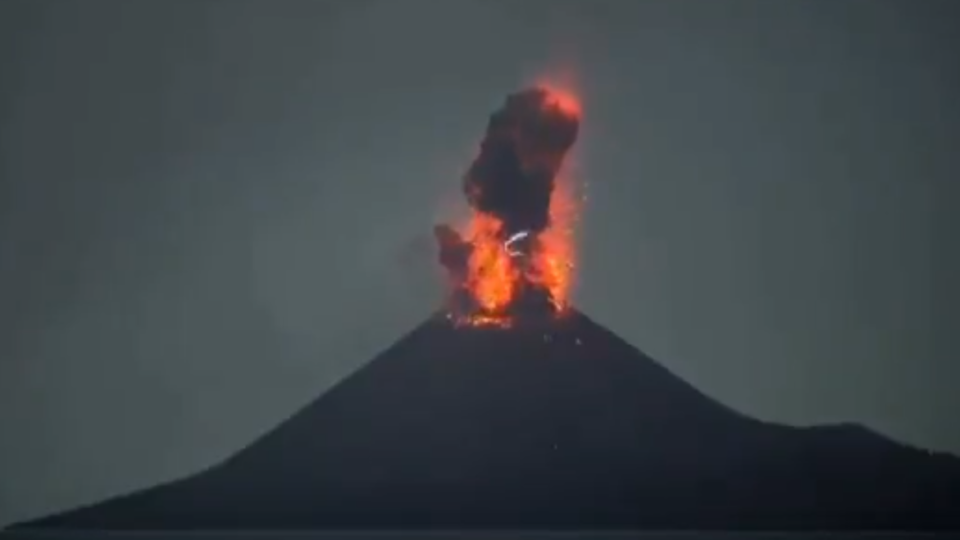Anak Krakatoa erupted late last night, sending a massive plume of smoke and ash as high as 500 meters above the volcano’s peak.
Indonesia’s Center for Volcanology and Geological Disaster Mitigation (PVMBG) confirmed in a statement issued today that the volcano erupted between 9:58pm and 10.35pm last night. Despite the eruption, authorities have not increased the volcano’s danger level and Anak Krakatoa remains on level alert two, or “caution,” with authorities recommending a 2 kilometer radius exclusion zone.
Twitter has been flooded with footage from the webcam on Anak Krakatoa island, as well as other recordings that show the scene of the eruption.
La erupción del #Krakatoa es algo que si bien no pasaba desde el siglo XIX, era de esperarse. Sin embargo, hay que resaltar que en las últimas horas, son 4 los volcanes en Indonesia que han estado con actividad: Krakatoa, Semeru, Monte Merapi y Tambora. pic.twitter.com/v1iphZ11QG
— José Parra (@masqueuncoach) April 11, 2020
#Krakatoa has erupted and so violently the #volcano startled everyone with a loud bang that could be heard even in Jakarta (150 km away), and sent a column of ash 15 km into the air.#Indonesia #Krakatau pic.twitter.com/suCHI9Utmj
— Paul S Armstrong 🇬🇧 (@paulsarmstrong) April 11, 2020
Residents in the Greater Jakarta Area have reported hearing strong “boom” sounds hours after the volcanic eruption, to which authorities claim cannot be attributed to any tectonic earthquakes triggered by Anak Krakatoa.
“Based on [available] data, BMKG [Meteorology, Climatology and Geophysics Agency] can ensure that the boom sound did not come from tectonic earthquake activity,” BMKG official Rahmat Triyono said in a statement.
Anak Krakatoa, which translates to “Child of Krakatoa,” last had a major eruption in December 2018, generating a tsunami that killed more than 400 people and displaced tens of thousands.
The volcano is the offspring of the infamous Krakatoa volcano, which erupted in 1883 in one of the biggest blasts in recorded history and triggered a period of global cooling.




